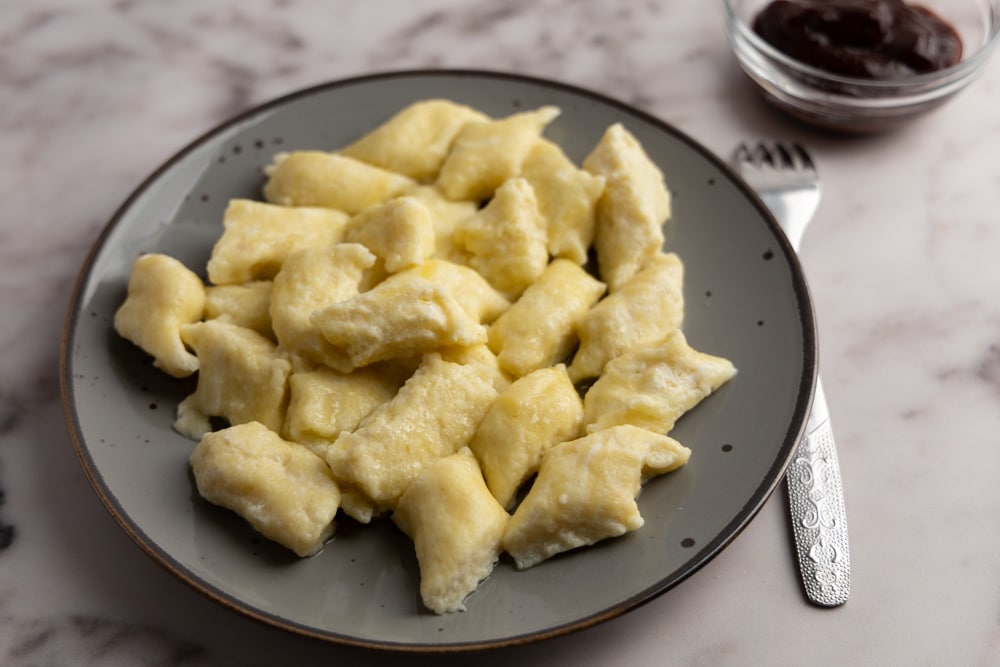Polish Pierogi vs. Italian Gnocchi: A Simple Breakdown
Both gnocchi and pierogi are dumplings that are cooked in boiling water, but the similarities largely stop there.
Pierogi are made from a flour-based dough that’s cut into circles, filled, and then cooked. In contrast, gnocchi are small morsels of potato-based dough that are cooked without any filling.
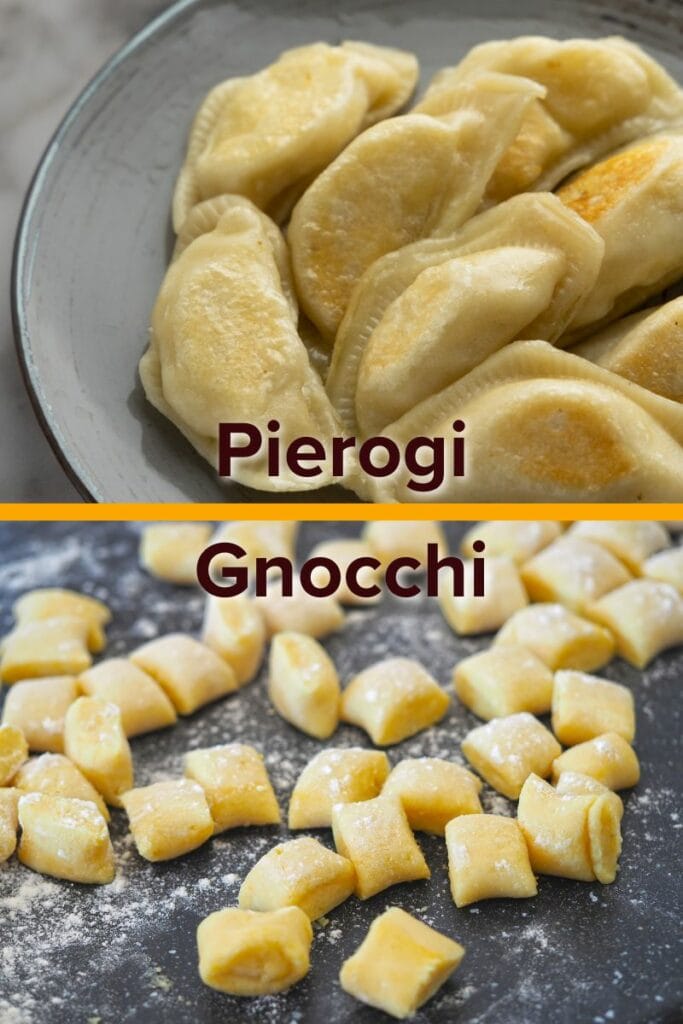
That’s the basic rundown on pierogi vs. gnocchi.
Now, let’s delve into the key differences in more detail.
Ingredients
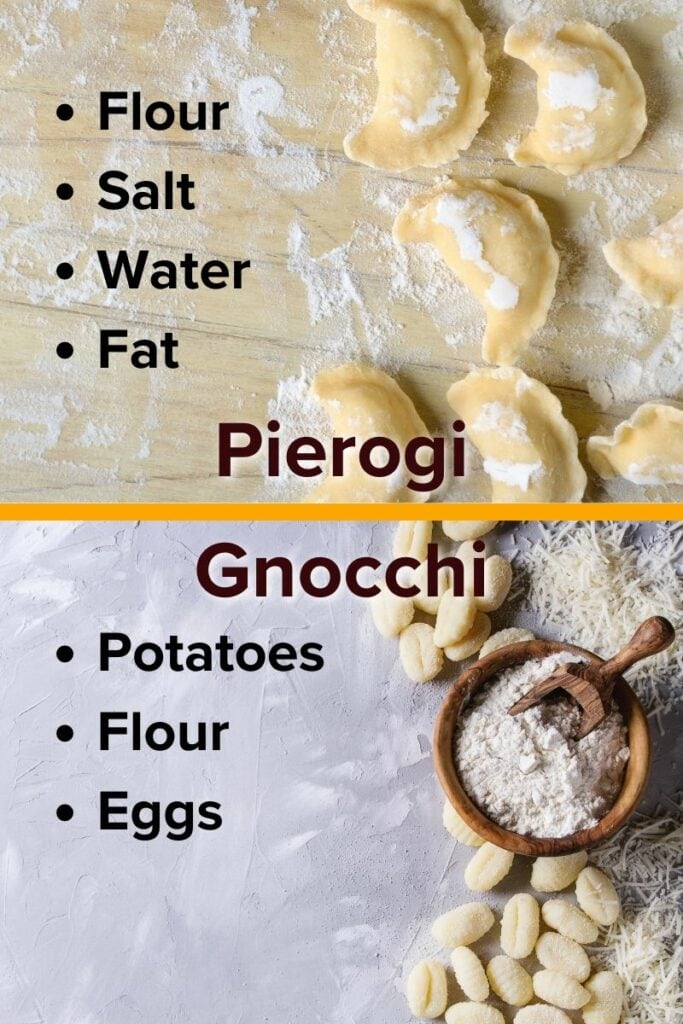
Pierogi dough is made from flour, salt, water, and often a fat like oil, making it similar to pasta dough. Once you prepare the dough, you roll it out, cut it into circles, and fill it with various ingredients.
The most popular fillings are meat and potato with cheese, but the options are nearly endless – you can use any ingredient combo that’s soft enough to be pliable but firm enough to hold its shape.
Gnocchi dough, on the other hand, is comprised of cooked potatoes, flour, eggs, and occasionally some salt. Its preparation is reminiscent of a refined mashed potato dish and is akin to the Polish kopytka recipe.
(Though, kopytka are notably less popular.)
Next, we explore the variations in preparation.
Preparation
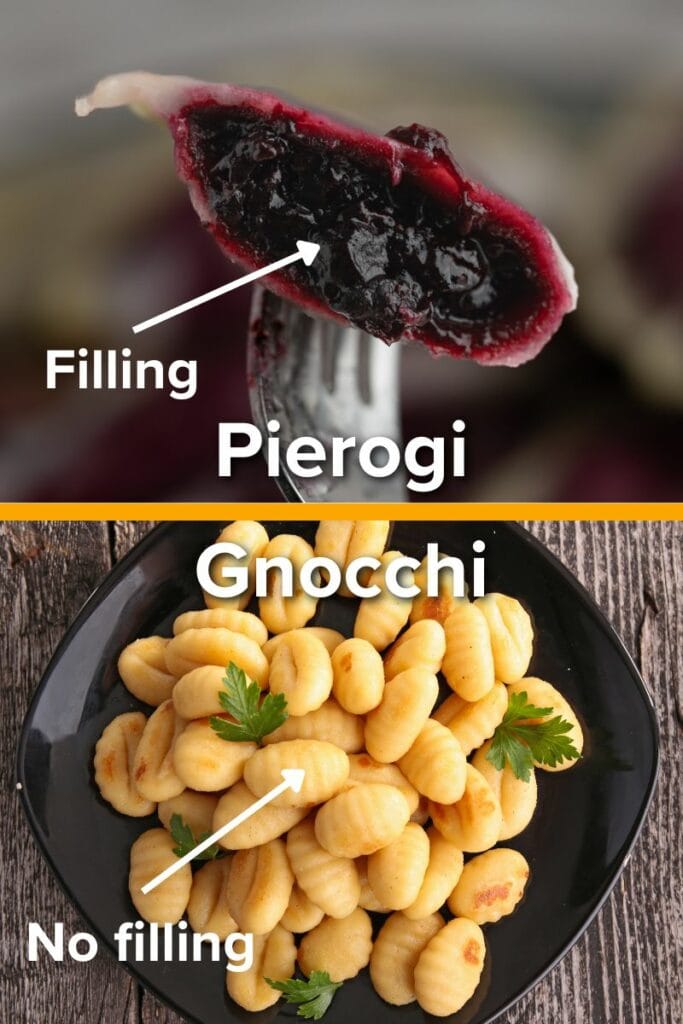
Making pierogi involves a three-step process:
- Knead the dough.
- Prepare the filling.
- Form and cook the pierogi.
Gnocchi preparation is somewhat simpler, boiling down to two steps:
- Knead the dough.
- Form and cook the gnocchi.
The main distinction in preparation is the absence of a filling in gnocchi, which eliminates the need to cut out dough circles and stuff them, as with pierogi.
Instead, roll the dough into a rope, cut it into segments, slide each piece on a fork for that classic gnocchi texture, and they’re ready for cooking.
(By the way, if you’d like to learn how to make pierogi at home, check out our beginner’s guide to pierogi.)
What about the flavor?
Flavor
Pierogi taste great right after cooking, even without any topping. So, while there are numerous popular pierogi toppings, they’re delightful served plain.
Conversely, gnocchi often leans towards the bland side, relying on a sauce to truly pop.
Of course, there are different recipes out there, some of which include salt (that much improves the flavor), while others don’t. But again, unlike pierogi, gnocchi is meant to be dressed before serving.
Overall, the primary flavor of pierogi comes from its filling, with the topping enhancing it further. For gnocchi, the sauce is the star.
Shape
Pierogi are typically sizable, ranging from half to a whole fist, and usually sport a half-moon shape since the dough is cut into circles before being folded over the filling. Gnocchi, however, are petite and oval, featuring a slight ridge that allows them to hold more sauce.
Although you can technically shape both as desired, pierogi are traditionally much larger than gnocchi due to the need to encase the filling (and lots of it).
Let’s finish off with a couple of words about the origins of both.
Origin
Pierogi are believed to have their roots in Asia, but over time, they found a special place in Polish cuisine. Today, they are predominantly associated with Poland.
In contrast, the origins of gnocchi are more straightforward: these dumplings hail from Italy, the country that instantly comes to mind when one mentions “gnocchi.”
So there you have it, the most important differences between pierogi and gnocchi.
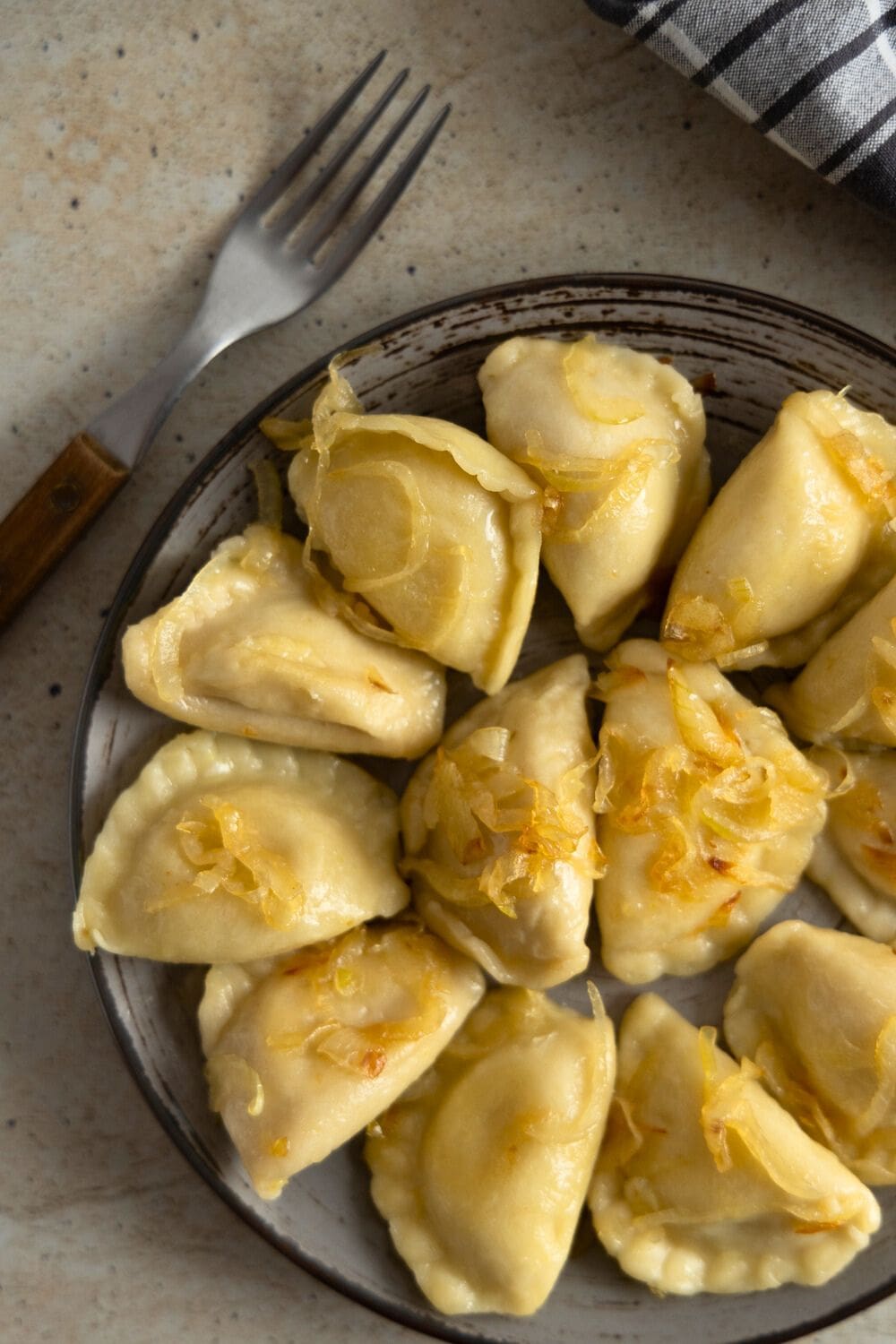
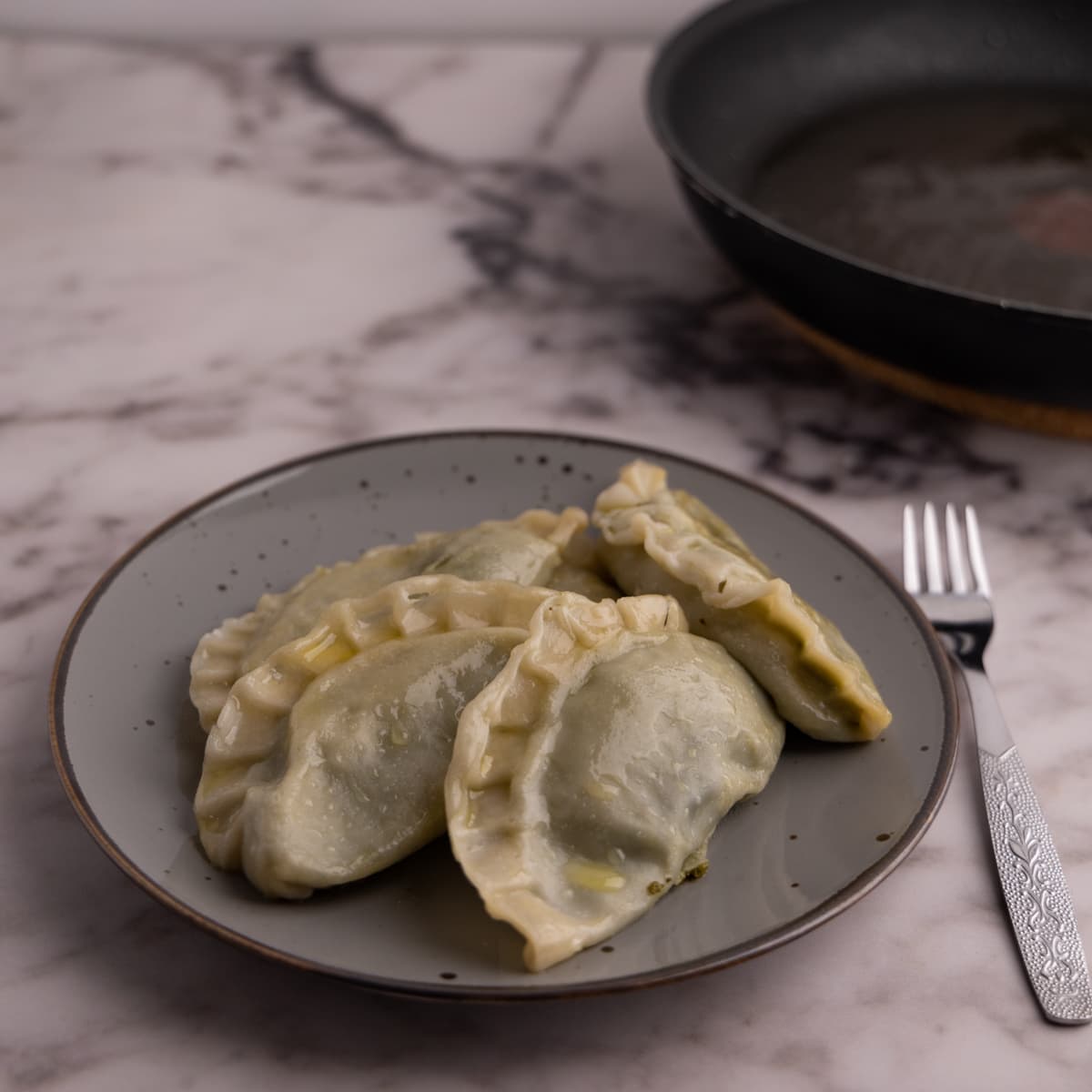

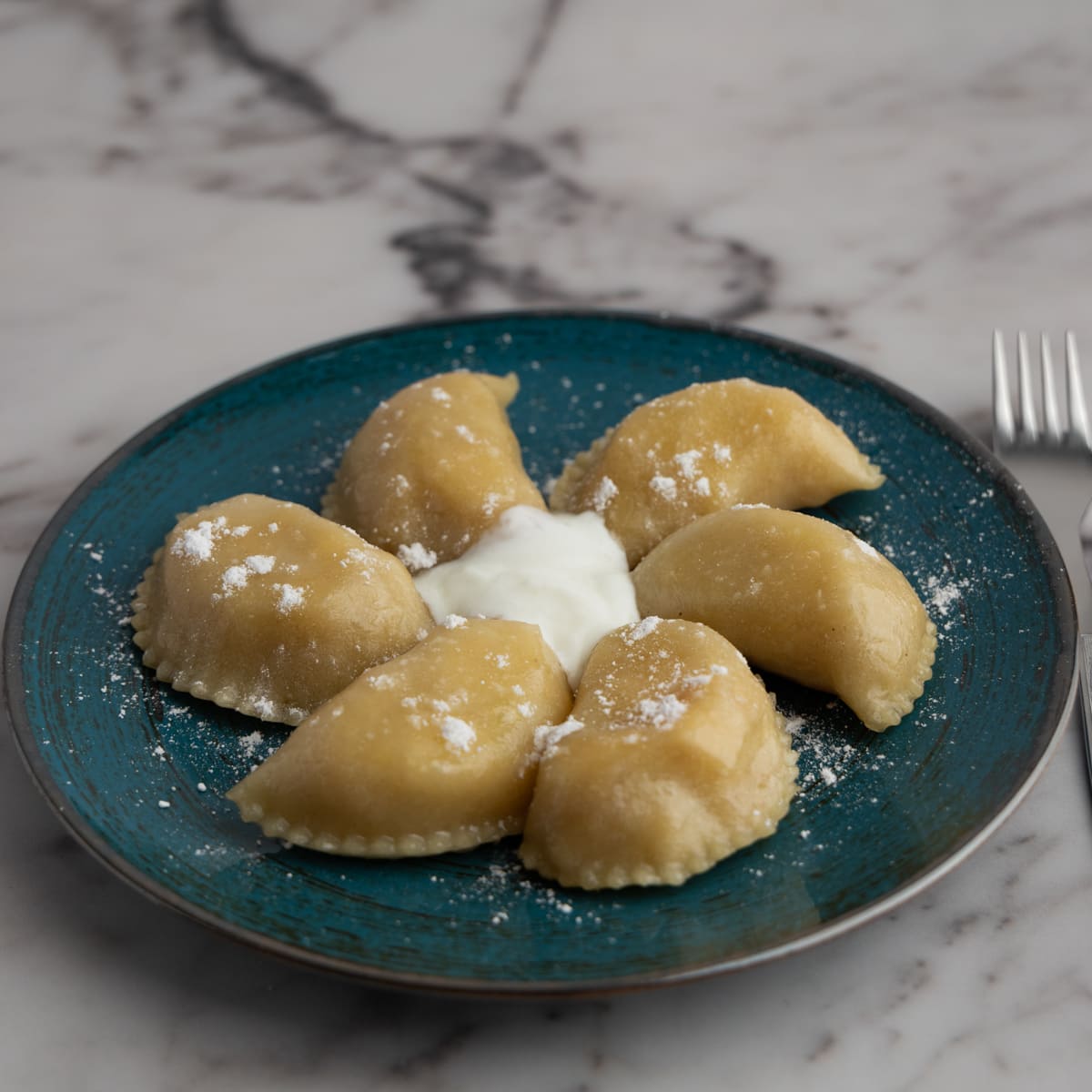
![Sweet Cheese Pierogi Recipe [+2 Flavoring Options]](https://definitelynotachef.com/wp-content/uploads/2023/08/Sweet-cheese-pierogi-with-sauce-and-fresh-berries.jpg)
